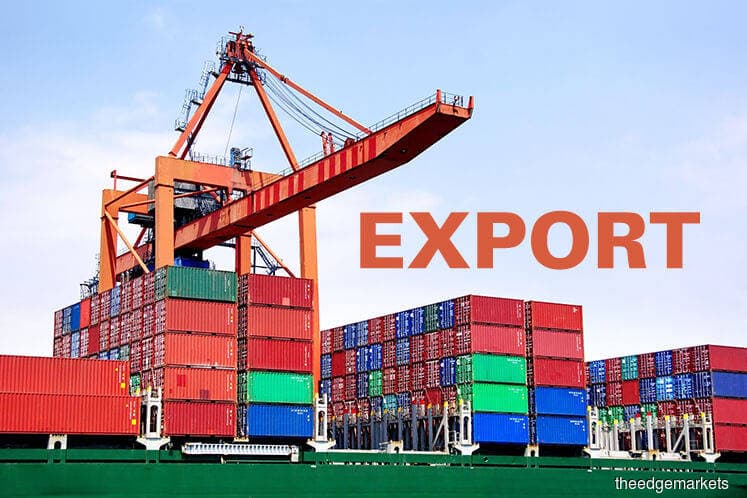
This article first appeared in The Edge Financial Daily on March 6, 2018
KUALA LUMPUR: Export growth surged to 17.9% year-on-year in January, from 4.7% in December and ahead of market consensus of 13%, but economists maintain that there will be a moderation in growth this year compared with last year.
They said the export growth will be slower in the second half of 2018 (2H18) as the high base effect in 2017 is unlikely to be repeated.
“We maintained our forecast at about 7% export growth for the full year 2018 as compared with a strong 18.9% in 2017 because I expect export growth to be slightly slow in 2H18,” said Affin Hwang Investment Bank Bhd chief economist Alan Tan.
“In 1H18, export growth [is expected to] remain healthy in low double-digit growth, but in 2H18 we believe export growth will slow because of the high base in 2H17.” Tan told The Edge Financial Daily.
The department of statistics yesterday reported that Malaysia’s export grew by 17.9% or RM12.6 billion to RM82.9 billion in January. The growth was contributed by electrical and electronic (E&E) products, which increased by 27.1% or RM6.8 billion to RM31.7 billion, making up 38.2% of total exports.
Palm oil and palm oil-based products, which made up 7.9% of total exports, grew 10.4% to RM6.6 billion, from RM620.4 million. Liquefied natural gas, meanwhile, rose RM460 million or 14% to RM3.8 billion, and accounted for 4.5% of total exports.
Malaysia’s imports also rose in January, expanding 11.6% year-on-year to RM73.2 billion, on higher purchases of consumption goods. Total trade in January amounted to RM156 billion, up 14.9% or RM20.2 billion from a year earlier.
Tan said the E&E products export would not be as strong in 2H18 as it was in January, partly due to the fact that global manufacturers had already replenished their inventory last year as demand came better than expected.
“In order for Malaysia’s exports to pick up significantly, we need to see global production increasing. However in 2H18, we may see a slowdown in global demand. Therefore, we think that global production will also slow in 2H18 and this will be translated into Malaysia’s export as well as production numbers towards 2H18,” he said.
At the same time, Tan expects the protectionism and anti-trade measures by the US to have some implications on global trade as well.
“In 1H18 we think the growth will continue to sustain, but in 2H18 is where things will slowdown a little,” he said.
AmInvestment Bank group head of research and chief economist Anthony Dass agreed that export growth in 2018 will be smaller as the base is higher.
“We are looking at 8% to 10% of export growth for this year because of the high base effect. We think the export number is going to be a bit softer.
“I think semiconductor, commodities, and resources based products would have also helped the export figure for this year,” he said when contacted, adding that the group is still positive about Malaysia’s exports, as it is still growing steadily and firmly.
United Overseas Bank (M) Bhd, which maintained its export growth estimate of 9% for 2018, said the downside risks include further trade protectionist measures led by the US, more aggressive monetary policy normalisation from global central banks, geopolitical risks and sharper-than-expected China slowdown.
“Upside risk includes a stronger recovery in the advanced economies and positive spillovers from US tax reform,” said senior economist Julio Goh in a note.
Online brokerage FXTM’s global head of currency strategy and market research Jameel Ahmad, said January’s export figures indicate that the economy has carried the impressive momentum from 2017 into the new year.
“The data suggests that the Malaysian economy is still expanding at a robust pace in 2018,” he said in an email response.